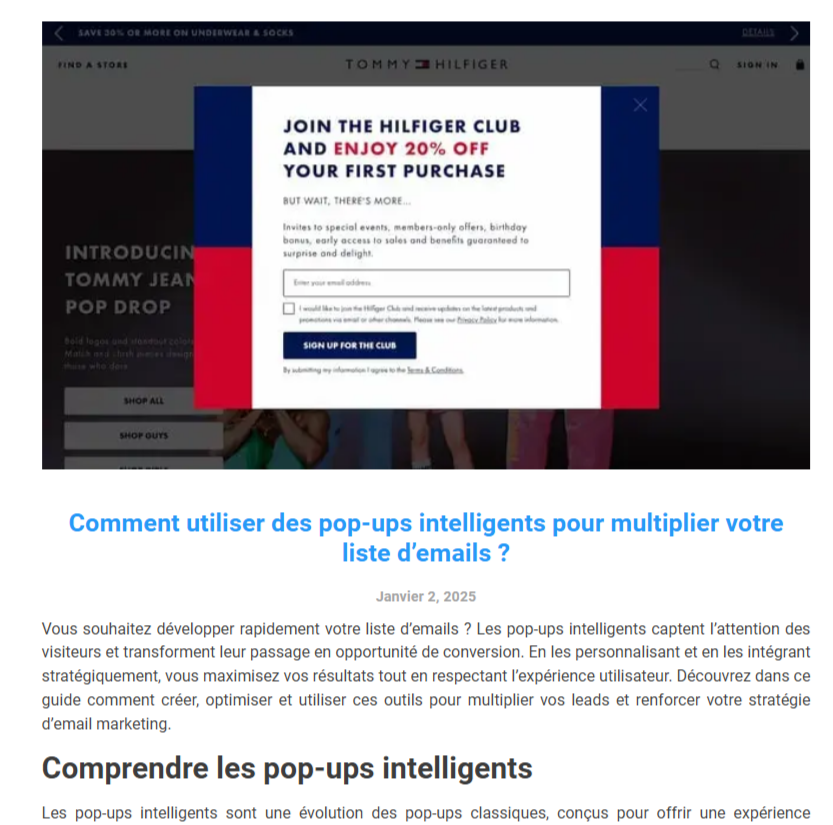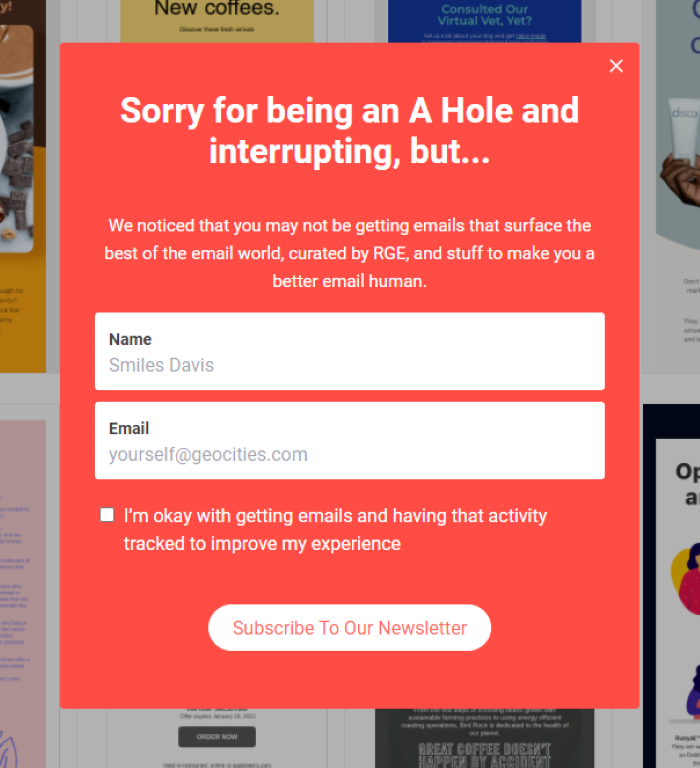
Utilize pop-ups to promote your most profitable articles
Did you know that pop-ups, often perceived as intrusive, can become your best allies in boosting your sales? When used correctly, they highlight your most profitable items while capturing the attention of visitors. In this article, discover how to identify your star products, design effective pop-ups, and optimize your results. Ready to turn your visitors into buyers? Read on to find out more!
1. Identify your most profitable items
To maximize the effectiveness of your pop-ups, it is crucial to first identify your most profitable items. These products, which generate a significant share of your revenue, should be at the center of your strategy. Here’s how to proceed methodically:

Analyze your sales data
Start by reviewing your sales figures. Use tools such as Google Analytics, Shopify Analytics or any other e-commerce dashboard. Look for products that not only sell well but also those that have the best profit margin. For example, a frequently sold product with a low margin may be less strategic than an item sold slightly less often but with a high margin.
Evaluate demand and potential
Identify items that meet your customers’ needs or have seasonal demand. For example, if you sell clothing, your star items may vary by season: coats in winter or swimsuits in summer.
Concrete Example: Data That Speak
A recent study conducted by OptinMonster shows that showcasing your top-performing products in pop-ups can increase your overall sales by 30% on average. This statistic emphasizes the importance of rigorous analysis before integrating your items into targeted campaigns.
2. Design impactful pop-ups to maximize their impact
Once your most profitable items are identified, the next step is to create effective pop-ups that will capture your visitors’ attention without compromising their user experience. Here are the keys to a well-designed pop-up:

An attractive design that fits your brand
The design is the first thing your visitors will notice. Use colors, fonts, and images that are in harmony with your visual identity to enhance brand recognition. An overloaded pop-up risks distracting attention, while a minimalist and clean design is more effective. For example, a high-quality image of your product accompanied by a clear button, like “Discover now,” can significantly increase clicks.
A clear and persuasive message
Your text should be both concise and convincing. Highlight concrete benefits for the user: an exclusive discount, a free gift, or free shipping. For example, a message like “Enjoy 20% off our best-seller today only!” creates a sense of urgency and encourages action.
The right time and the right place
Pop-ups should be strategically positioned to avoid frustrating your visitors. Among the most effective options:
- Exit-intent pop-ups: they appear when the user is about to leave the page.
- Delayed pop-ups: ideal for capturing attention once the user is engaged.
- Scroll pop-ups: triggered after a user has viewed a certain part of the page.
A notable example: according to a study by Sleeknote, exit-intent pop-ups increase conversions by 5 to 10% without disrupting the user experience.
By combining a polished design, an effective message, and strategic triggering, your pop-ups will become a powerful conversion tool.
3. Optimize and adjust your pop-ups for continuous results
Once your pop-ups are in place, it’s essential to optimize them regularly to ensure maximum performance. Analyzing data and constantly refining your strategy will increase your conversions.

Track performance with dedicated tools
Start by evaluating the effectiveness of your pop-ups with key indicators: display rate, click-through rate (CTR), and conversions. Tools like Google Analytics or specialized platforms like OptinMonster and Sleeknote provide you with valuable data. For example, if a pop-up displays a low CTR, it may indicate that its design or message is not engaging enough.
Conduct A/B testing to find the winning formula
A/B testing is essential for comparing different versions of your pop-ups. Experiment with elements like:
- The text: Test a direct message (“Buy now”) against a more engaging message (“Discover our star product with 20% off”).
- The timing: Compare a pop-up that appears after 5 seconds against one triggered after 15 seconds.
- The design: Test different colors, images, or sizes to see what captures the most attention.
A study from Campaign Monitor shows that A/B testing can increase conversions by up to 49% by identifying user preferences.
Adapt your pop-ups to the results
Once the data is analyzed, adjust your pop-ups to maximize their impact. For example, if a pop-up with a red button performs better than one with a blue button, apply this change to other similar campaigns.
With continuous optimization and a data-driven approach, your pop-ups will become an essential lever for your sales.
In summary, pop-ups are powerful tools for showcasing your most profitable items, provided they are well-designed and optimized. With a solution like Poosh, a leader in pop-up notifications, you can easily capture leads and maximize your conversions. Try it today for guaranteed results!